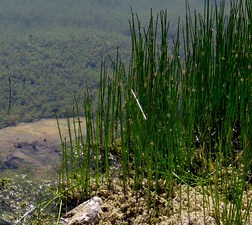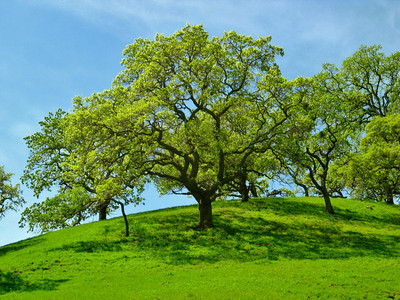Growing Up
Have you ever wondered why things (trees, grasses, weeds, people) grow
"up" instead of in some other direction? Probably not, but look around
you
and you'll see that "up" is the preferred direction for growth. I
became aware of this when I was about twelve years old and the older
neighborhood
boys and I were having "strength tests." One test was to
see whose arm could stay in the air for the longest time. The boys
whose arms were not perfectly
straight up soon dropped out. Bobby Holtz
and I were the last two survivors when he announced that he had to get
something in our tent. He walked into the
tent with his right arm in
the air and came out with his left arm up. We all laughed about that
but I had won. But, it set me to thinking--why?
Look at the lower limbs of some trees. As they get
longer, they tend to curve upwards. Seeking light, you say. No, that's
not it. Every side limb
on a tree is under a certain amount of stress
as it grows. The "top" portion of a limb is under a tension stress and
the bottom is under compression. This
tension stress acts to inhibit
growth whereas the compressional stresses stimulate growth by the
re lease of chemicals. Because the bottom cells of a branch
grow larger,
there is a natural tendency for this branch to grow upwards.
Also, there are chemicals in every seedling that
pre-program how this organism will grow. Plant one hundred pea
seedlings in a random manner and watch
as the first growth emerges. The
root materials always point downwards and the stems always point
upwards. Again, this is the result of certain chemicals built
into the
plant's makeup.

Grasses Growing Up
When my son Mark was in sixth grade, he entered a
science-fair competition. I suggested to him that he grow some
seedlings on an old 45-RPM turntable
that was in the garage. When the
first seedlings emerged, we turned the turntable on and let everything
grow for a week. Which way did the seedlings end up
growing? The
"natural answer" would be to say "In an outwards direction, since the
centrifugal force would force the seedlings that way. Instead, the se
seedlings
started pointing inwards towards the center of rotation - so
as to act against the force of gravity. After a week, the seedlings at
the outer edge of the turntable
were growing inward at almost a
45-degree angle, compared to the vertical. The combination of gravity
and centrifugal force made the seedlings grow in what the
plants
"thought" was an "up" direction. Plants don't think, but the chemicals
in them act that way.
And you thought nature was simple!
Jerry Fritzke
June 18, 2003






 Join/Renew
Join/Renew Donate
Donate Volunteer
Volunteer Maps
Maps Newsletter
Newsletter Facebook
Facebook
